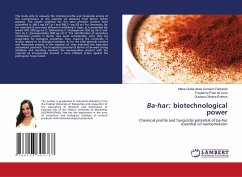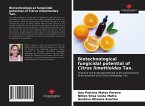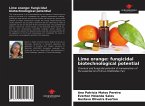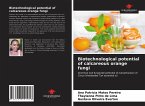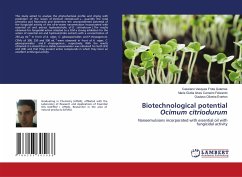This study aims to evaluate the chemical profile and fungicidal activity of the nanoemulsion of the essential oil obtained from Ba-har (Syrian pepper).The results obtained for the total phenolic content were quantified in 348.3 mg EAT g-1 and 346.21 mg EQ g-1 for flavonoids. Ba-har essential oil was most effective in inhibiting A niger, as it had the lowest MIC (200 µg mL-1), followed by P. chrysogenum (250 µg mL-1) and later by C. gloeosporioides (300 µg mL-1). The identification of the secondary metabolites present in Ba-har was quite considerable, as they are responsible for the biological properties, thus inspiring the continuation of studies related to its biological activities. As for the total content of phenol and flavonoids present in the essential oil, they indicated a significant antioxidant potential. The fungicidal potential of Ba-har oil showed strong inhibition and mortality, however the nanoemulsion product with the incorporated essential oil showed a more effective action against the pathogenic fungi tested.
Hinweis: Dieser Artikel kann nur an eine deutsche Lieferadresse ausgeliefert werden.
Hinweis: Dieser Artikel kann nur an eine deutsche Lieferadresse ausgeliefert werden.



